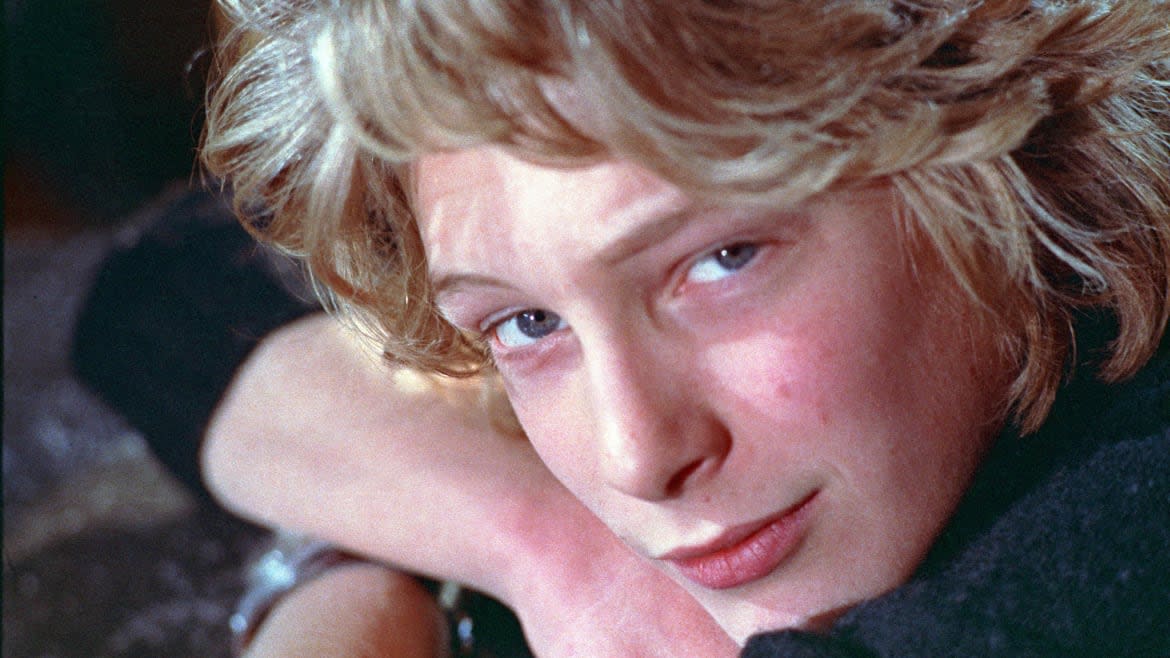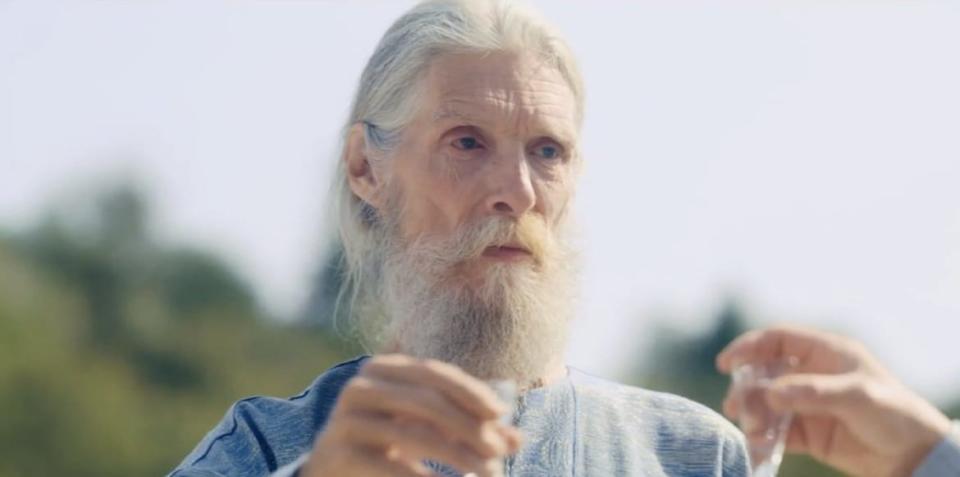The Tragic Curse of Being the ‘Most Beautiful Boy in the World’

The story of the “Most Beautiful Boy in the World” unfolds like a dark thriller.
It’s a story about the perils of child stardom. It’s a cautionary tale about the exploitation of young stars and the commoditization of beauty. It’s a horror story about the stripping of one’s agency at a young age and the reverberating effects that has on the rest of their life. It’s a glimpse at the generational cycle of trauma, guilt, and depression, and the seeming impossibility of feeling one’s own worth.
Premiering at the Sundance Film Festival on Friday, The Most Beautiful Boy in the World is a documentary entry in the beloved “Where are they now?” genre, albeit one of the more curious and unusual ones we’ve seen.
In 1970, when Björn Andrésen was 15, he was personally cast by famed Italian director Luchino Visconti in the film Death in Venice. The role of Tadzio required a vessel to live up to the description written by Thomas Mann in the novella from which the film was adapted: “...having honey-coloured hair, like a god in greek mythology. And the boy is not really human—rather, an angel of death.”
When the film premiered at the Cannes Film Festival a year later, Visconti proudly heralded Andrésen “the most beautiful boy in the world,” a coronation that made international headlines and turned the young teen into an overnight star and, to his great discomfort, sex symbol.
The Most Beautiful Boy in the World marries archival footage from the time with new interviews with Andrésen, now an aging actor and musician in his sixties living in Stockholm. (In a great piece of trivia, Andrésen played the community elder whose disturbing, grotesque death is the turning point to madness in the 2019 film Midsommar.)

Luchino Visconti and Björn Andrésen in The Most Beautiful Boy in the World
Directors Kristina Lindström and Kristian Petri tour Andrésen back through the locations that shaped his ultimately unfortunate rocket to fame: Tokyo, where he became one of the first Western European teen idols; Paris, where he lived off the money and gifts from gay men who treated him as a “wandering trophy”; and, of course, Venice, where the film that would change his life was shot.
Especially early in its running time, The Most Beautiful Boy in the World plays like a horror film. There’s a menacing vibe, as if warning the viewers of darkness to come. It drums up an anxiety that perhaps mimics the sudden paranoia and lack of control that a young Andrésen felt as his identity was yanked from him and he became a product, an aesthetic to be consumed. But it all foreshadows that the filmmakers have more on their mind than just the objectification of child stars.
Andrésen’s tragic family history haunts him. In fact, it’s a crucial part of his physical appeal, with everyone from Visconti to Japanese Manga artists, who used his image as the inspiration for one of the most popular romantic-fantasy comic series and characters, praising the “sadness to his face.”
The multiple threads in the film—celebrity and industry commentary, character study on survivorship and trauma—occasionally become knotted, making for a frustrating viewing experience as you try to untie them. But there is something profound about the clear-eyed melancholy through which Andrésen’s story is told, a perspective that’s rare for a film like this, that elicits empathy as much as it is surprisingly moving.
When Andrésen was 11 years old, his mother died, about a half a year after she disappeared, never to be heard from again. Andrésen and his sister were raised by their grandparents, and his grandmother had ambitions of his becoming a star. She’s the one who took him to the Death in Venice casting call in Stockholm.
Visconti had been scouring Europe for the muse for his next film. The director, who was openly gay, had been preoccupied with the story of Death in Venice for years: An aging composer on holiday in Lido becomes struck by the otherworldly beauty of a vacationing adolescent boy named Tadzio. The composer is dying, but the transcendent sight of Tadzio’s attractiveness rejuvenates him.
By today’s standards, the novella, the film adaptation, and Visconti’s enthusiastic casting search for the alluring young boy to himself obsess over would be rendered entirely inappropriate. That hindsight adds crucial context to the footage of Andrésen’s screen test at just 15 that we watch in the film.
“Beautiful!” Visconti exclaims. “Ask him to undress.” The casting director next to him asks Andrésen to bare his torso, and we watch as photographers busily photograph Andrésen in his underwear as Visconti asks him to walk around the room and stare into the camera.
While Andrésen did at the time have one of those faces seemingly chiseled from stone, on which every expression is somehow a smolder—smoldery confusion, smoldery apprehension, smoldery excitement—you can clock his discomfort. He giggles nervously when asked to undress. Smoldery sheepishness.
Casting director Margareta Krantz remembers, “I was standing next to Visconti, when this blond boy turned up. It was plain to see that Viconti’s whole body came to life. The boy was exquisitely beautiful, with a truly photogenic face. He was a real find. He was a boy with a very special charisma. He seems frail. And that’s really beautiful in a film. You need to be very careful in dealing with children like that.”
It was clever marketing on Visconti’s part to constantly talk up Andrésen’s looks as a cinematic revelation, coining the “most beautiful boy in the world” moniker that caught on like wildfire. At just 16, Andrésen was the toast of the Croisette when Death in Venice premiered at Cannes. But even at that age, he could tell that he was being used.
Visconti was already making disparaging, gross jokes about how he was less beautiful now that he was a year older and taller. After the post-premiere banquet, his handlers all abandoned him, and he ended up dangerously drunk carted to a gay club, where his now-famous face was seen as prey.
The studio sent him to Tokyo, where his arrival was received similar to the Beatles landing in the U.S. His face was used in commercials. He was on a non-stop tour of appearances. He even recorded a Japanese-language love song. To sustain the pace, he was fed pills.
He had a fruitful career as a teenager into his twenties. But that didn’t absolve the abuse he knew nothing better than to succumb to. He recalls living in Paris in 1976 off the allowance and gifts delivered by wealthy gay men who he thought were simply nice fans and friends, but who he now realizes treated him like an escort. “The Most Beautiful Boy in the World” to be seen on their arms.

Björn Andrésen in Midsommar
Woven throughout these reminiscences is a look at Andrésen’s life now. That wispy hair with the feathering that would make Farrah Fawcett weep is now a cascade of gray down to the small of his back, and a lengthy white beard to match. His svelte, boyish frame is now that of a frail, skinny older man. His apartment is in a state of squalor, until his on-again, off-again girlfriend rallies to clean it up.
Modern-day Andrésen isn’t just confronting the reality of what he went through as an objectified teen, he’s dealing with the emotional pain of the distress he never acknowledged: the disappearance of his mother, his own negligence as a father, his alcoholism and depression. All of it, the celebrity stuff and the family secrets, boil down to one painful truth: He had never allowed himself to be human.
It takes the entire film for Andersen to reveal his deepest, most formative secrets, both about his experience following Death in Venice and, the most tragic event of his adult life.
Maybe that was a narrative choice on the part of the filmmakers, an attempt to tease out the brutal revelations until the bitter end where they land like sledgehammers, to make the point that it’s not the events themselves that we should be fixated on, but instead the empathy for a person navigating a life burdened by trauma. Fair, too, is to assume that it took that long for Andersen to feel safe enough to allow himself that vulnerability.
This is a person still wearing the scars of his experience five decades prior with Visconti, a director who used and discarded him when he needed to be protected most. It apparently took three years for Andrésen to fully give filmmakers Lindström and Petri his full trust. Embarrassingly, it’s not until the end that we realized the inherent tension at the crux of making a film like this. How do you make a film about the effects being exploited had on a person without possibly exploiting him again?
The catharsis and, maybe, a modicum of healing Andrésen seems to achieve through his eventual candor is powerful. The initial framing here may be that of celebrity and a child star, but it’s a universal question that some of us, including Andrésen, have difficulty answering: Who are you when you don’t have access to yourself?
Get our top stories in your inbox every day. Sign up now!
Daily Beast Membership: Beast Inside goes deeper on the stories that matter to you. Learn more.

